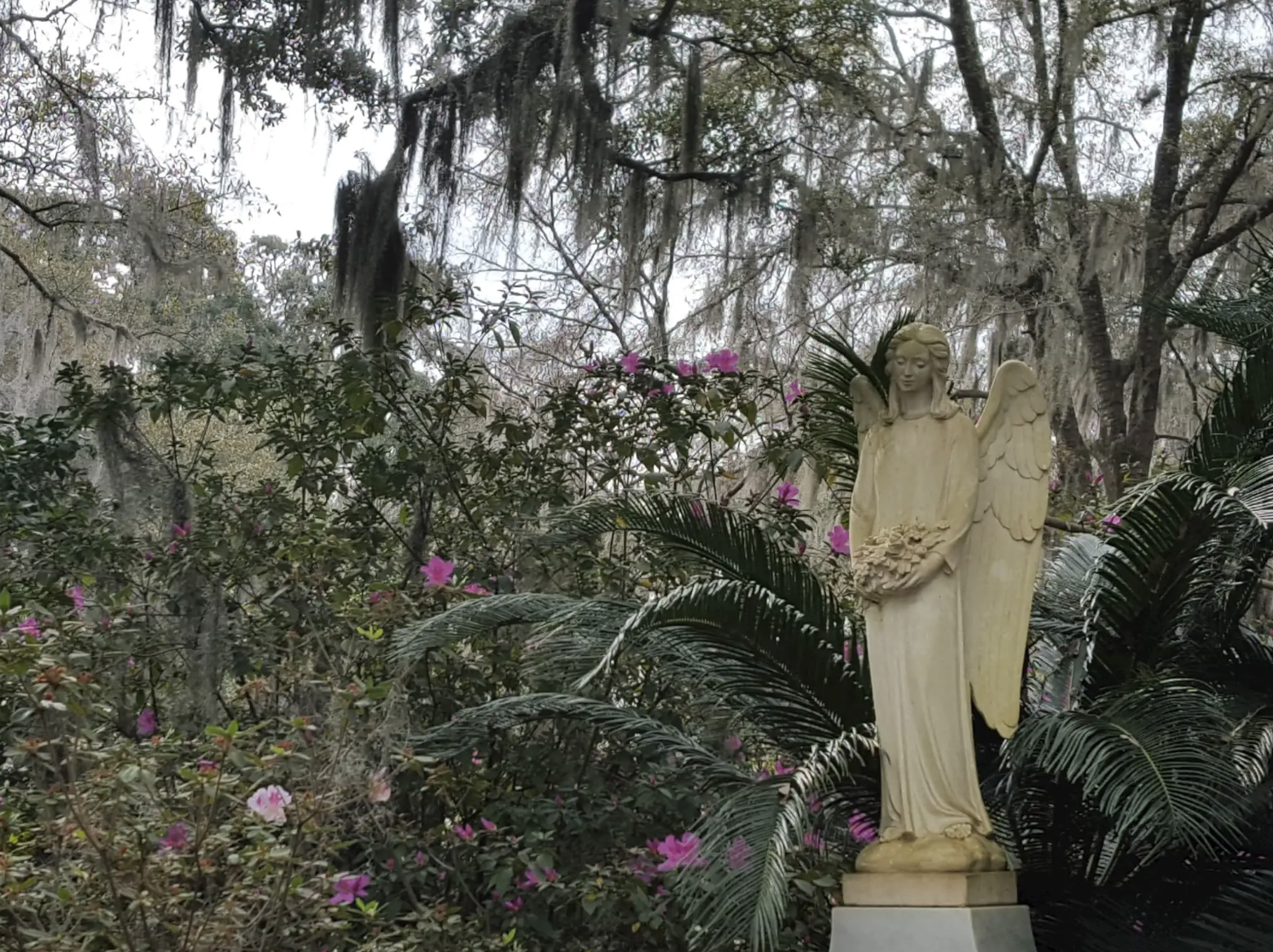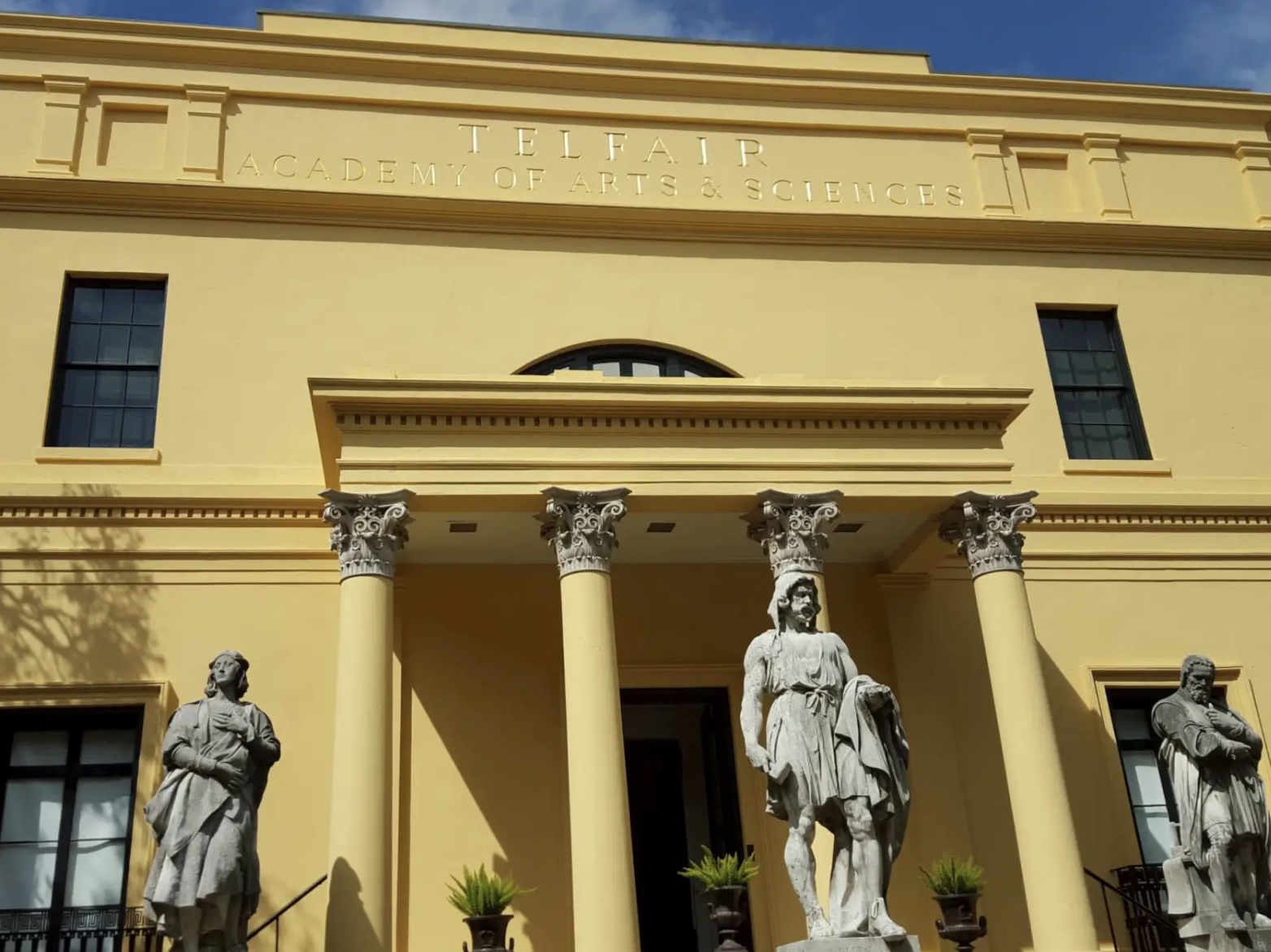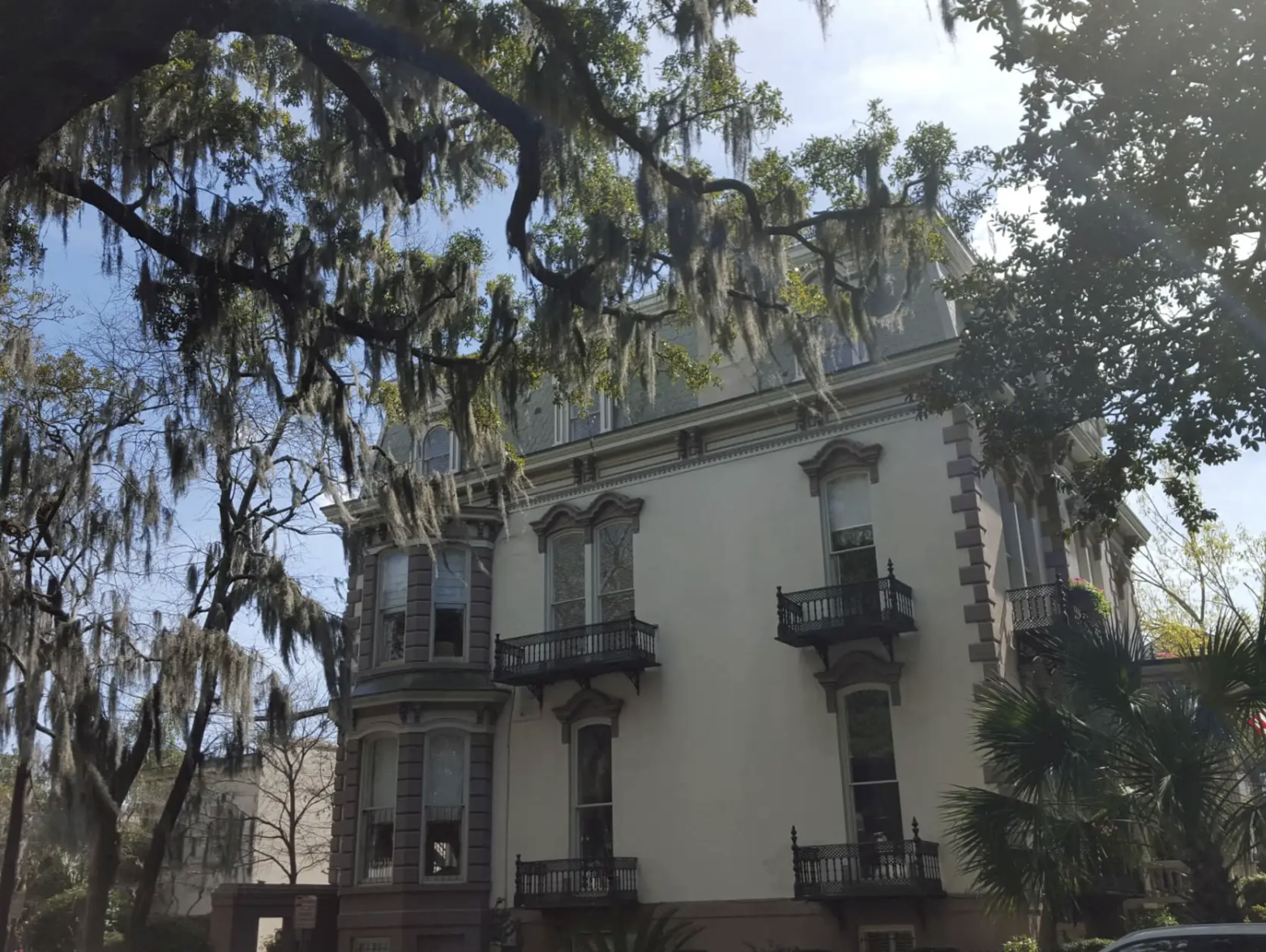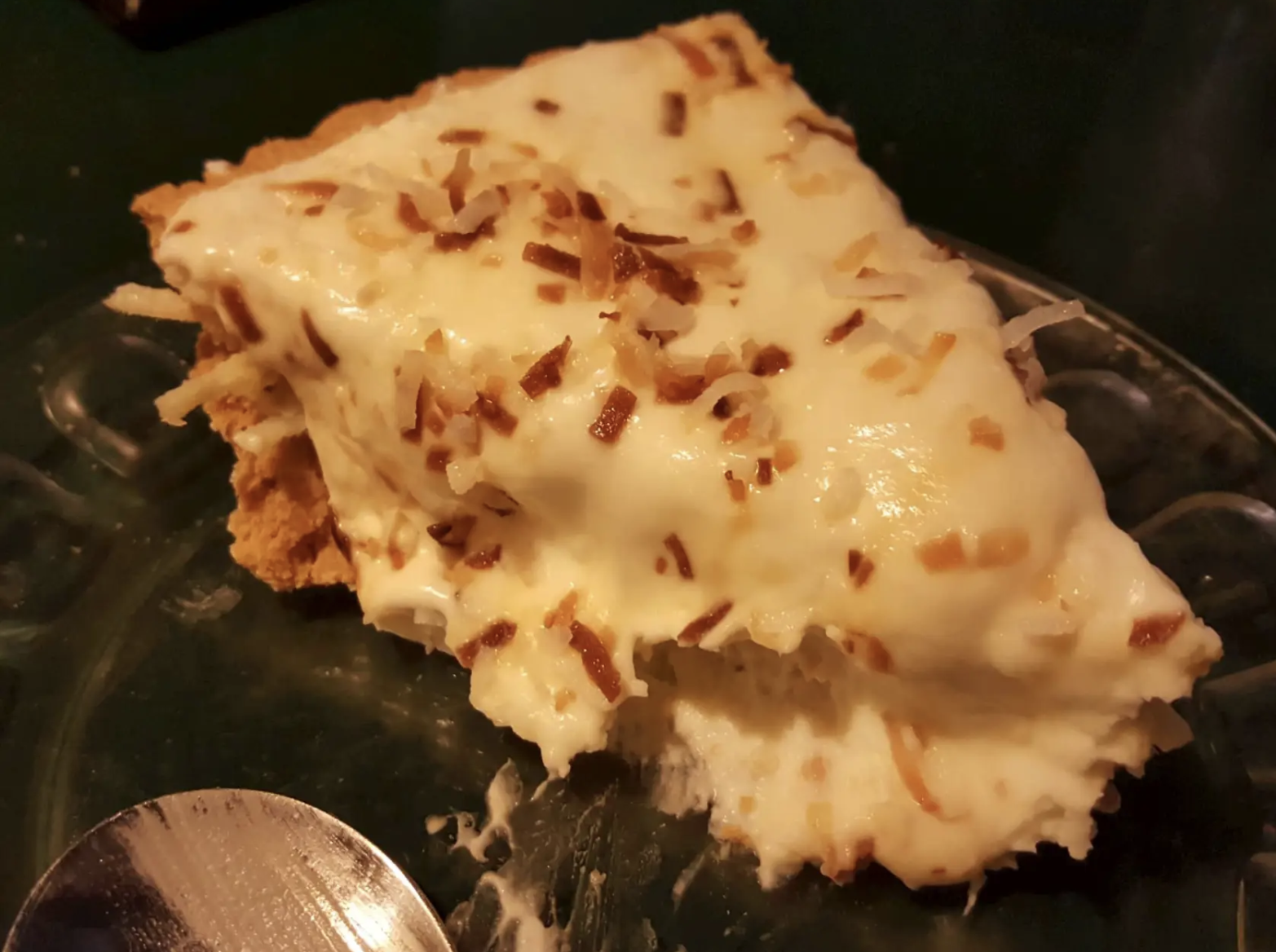Savannah in 12 hours
I knew three things about Savannah when I landed at the airport. There’s a famous cemetery, Spanish moss hangs on the trees, and there was a trendy restaurant in a converted Greyhound bus station that I just had to see.
Five minutes in and I had already made one rookie mistake. I ordered iced tea and was surprised to find it sweet as a lollipop. (Full disclosure: I’m a lifelong Northerner.) Things are different down here, and I only had a few hours to get a handle on this old river port in Georgia.
Fortunately, I had a friend in town who got me off on a better foot and gave me the highlights. I didn’t spend a minute in the touristy waterfront lined in t-shirt shops and the pirate museum with the long line. (However, you can ride the riverboat across the river and back for free and watch the tanker ships float by. Cheap thrills for sure.) But I did find out what makes Savannah tick in an off-the-beaten path, do-it-yourself kind of way.
Here’s what you shouldn’t miss if you only have a day to spare:
Start with Art
Get right downtown into the historic district and seeks out the sights along Savannah’s famous tree-lined squares. The Telfair Academy is a bright yellow former mansion along Telfair Square. It was built in 1818 and turned into a museum before the 1900s even rolled around. It has beautiful Impressionist paintings by both French and American artists you’ve probably never heard of.
The Telfair Museum is filled with French and American Impressionist artists you’ve never heard of but will love.
Like Edward Redfield’s Van Gogh-like rendition of Center Bridge, Pennsylvania, in the snow. There’s also a gem of a painting by poet Kahlil Gibran. It’s like a secret stash of art. Changing exhibits are up the marble staircase. Pretend you’re at a ball as you ascend.
The ticket to the Telfair (it’s pretty steep at $20—about $1 per painting on view, but it’s nice and cool inside) also buys you admission to two other museums not far away—the Jebsen Center, which is thoroughly modern (more on that later) and Owens-Thomas House, another stately mansion considered to be a top example of English Regency architecture in America.
Walk the Squares
There are 22 squares in Savannah—each about 200 feet by 200 feet —laid out across the city as neighborhood centers with a cluster of shady trees and statue or a fountain in the middle. (Though this proud Polish American was shocked to find that Pulaski Square, hero of the American Revolution, had only a scrub of bushes in the center.)
Taking a rest on a massive stone bench in Chippewa Square, I listened to a guy play ‘Can’t Buy Me Love’ and other Beatles tunes on his violin as horse-drawn carriages clip-clopped past and the breeze shook the moss in the trees. Walk north or south along Bull Street from here and you’ll find several squares with restaurants and shops in between.
Cathedral of St. John the Baptist at Lafayette Square
Check out the Cathedral of St. John the Baptist along Lafayette Square. Its Art Nouveau stained glass windows imported from Austria are gorgeous. Across the square is master Southern writer Flannery O’Connor’s childhood home (she was Catholic, by the way), a stately stone rowhouse that I rather expected to be a dilapidated pile of wood with a leaning front porch. But I guess that’s why it’s called fiction.
The lobby of SCAD’s amazing Jen Library.
Walk a couple of blocks and you’ll find ShopSCAD on the corner of Charleton and Bull streets along Madison Square. The influence of the Savannah School of Design—otherwise known as SCAD (rookie mistake number 2) —is felt throughout town, leaving a thoroughly modern brushstroke on a thoroughly historic town. From the vintage neon sign on the Trustees Theater on Broughton Street to the mind-blowing Jen Library filled with student and alumni artwork to beautifully renovated buildings throughout the city. Students with lopsided purple haircuts on skateboards can be spotted at just about every corner. Find the best of SCAD creative at the store that gathers student jewelry, gifts, painting, and fashion in one place.
Eat Lunch Somewhere Fabulous
Despite what your mother told you, lunch is the most important meal of the day. This is your break from walking and wandering, and it is also the chance to try a taste of an otherwise expensive restaurant often for half the price. My crown jewel lunch was at The Grey, a lively new hot spot that converted a 1938 art deco Greyhound Bus Terminal into a sparkling Southern fusion masterpiece with Chef Mashama Bailey. Lunch is served at the original lunch counter, gussied up with some gleaming new chrome and Deco pendant lights. The back room, where the bus gates used to be, is now the formal restaurant with items like oysters and Southern inspired birds and pigs with a creative twist on the menu.
Lunch a The Grey restaurant’s lunch counter in a restored 1938 Greyhound bus station.
Up front, during the short lunch window (they close at 2 p.m.), the Patty Melt is 80% sirloin and 20% lamb, the Egg in a Nest comes highly recommended (poached egg on spaghetti squash with pecans). I got the Blue Plate Special, a steaming plate of tomatoes, chickpeas, and baby shrimp flavored with fennel and fenugreek, with a runny egg on top, served with a slice of grilled bread,—all on a speckled blue metal plate.
The Blue Plate Special at The Grey
Chatting with my neighbor at the counter, I learned my next stop would need to be the Jones Street historic district, where all the most beautiful houses are to be found.
Keep Up with the Joneses
Head south a few blocks to Jones Street to get an eyeful of the kind of architecture that will make you point and ooh and ahh. This is the Savannah you imagined. Oak lined streets are populated with rowhouses and mansions with grand porches are in styles from Federal to Italianate to Queen Anne. There is intricate gingerbread on steroids, peaked gables, fancy iron grates and gates, soaring pinnacles, chimneys, columns, and turrets, and cool porticos and second-floor porches for taking in the breeze.
Breathtaking mansions along Jones Street.
Take A Break
Circle back to the Jepson Center for the Arts on Telfair square for an entirely different art experience. The building designed by world-renowned architect Moshe Safdie is sleek and modern, made of white stone and centered on a bright atrium and staircase. Here you can see the Bird Girl statue, made famous on the cover of the book “Midnight in the Garden of Good and Evil.” Don’t miss the sculpture terrace on the second floor for a rare view overlooking Savannah.
I had some fun with Daniel Rozin’s Pom Pom Mirror, a somewhat creepy little number made of vibrating fur balls, and selections from the Crystal Bridges Museum’s “State of the Art: Discovering American Art Now” exhibition gave a exciting look at the best artists working in America today. It closes September 4. The art here will surprise you, and you might even have to interact with it to have some fun.
Take a break at the Jepson Café, another beautiful spot that overlooks the museum lobby and the square. It is bright and airy and filled with art itself. The coffee is from the historic Savannah Coffee Roasters (they’ve been around for more than 100 years), and they serve freshly made soup and sandwiches. And yes, I was hungry again. Note: They also have Pavlova on the dessert menu. Go for it.
Bonaventure Cemetery is 10 minutes from downtown and sits along the Wilmington River.
Bonaventure Cemetery
Made popular by “Midnight in the Garden of Good and Evil,” the 1994 nonfiction novel by John Berendt that pulls the curtain back on some unsavory Savannah characters, the cemetery is about 10 minutes outside of the historic downtown and accessible by car (if you have one) or several guided tours will pick you up at your hotel and take you on a grand tour. It sits on the edge of the Wilmington River and is a spot of breezy, restful beauty with groves of oaks strung with Spanish moss, flowering azaleas that make the air sweet, and dramatic, carved tombstones and crypts.
Don’t miss the bronze statue of the woman who loved to run or the plot for Savannah’s favorite son, the great songwriter Johnny Mercer. He was responsible for greats like “Hooray for Hollywood,” “Jeepers Creepers,” “You Must Have Been a Beautiful Baby”, and just about every other song your grandmother used to sing to you.
It’s Time to Eat Again
Okay, I build my trips around food. I admit it. It’s the best place to truly get the taste for a town and meet some nice folks who will give you advice on what to do next. So I advise you to run, don’t walk, to Johnny Harris Restaurant. It’s slated to be torn down this year, but you might get lucky enough to put down one of their famous batterless fried chicken dinners and a slice of coconut cream pie (that has a consistency closer to rice pudding) in one of the deep, wooden booths that ring a round room and long-quiet ballroom dance floor that hosted wild nights from the 1920s to the 1960s. Imagine ringing the buzzer for the waitress and buying a Coke for the girl across the room.
The famous coconut cream pie at Johnny Harris restaurant.
The mural of a country scene along the ceiling was reportedly painted over the course of a year by a wanderer in exchange for food. It’s just as vibrant as the day it was painted, right under the blue domed ceiling with pinpricks to let in the light of the “stars.” Get one last look at history before it’s gone.
Time’s Up
Savannah overrunneth with ghost tours, and I can think of no better way to get to know a city than through its historic residents. Fortunately, there’s a trolley tour you can take to the hot spots (or should I say cold spots) after walking all day, or you can sign up on one of the working tours where they hand you and EMF and teach you how to hunt for haunters yourself.










